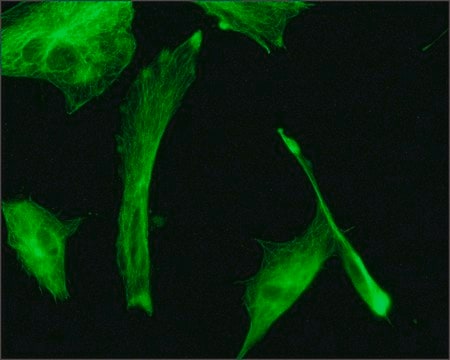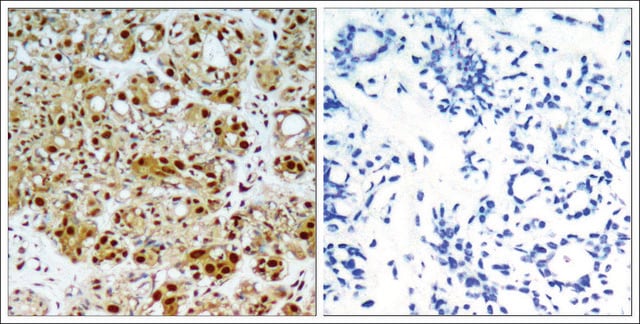T8328
Anti-β-Tubulin antibody, Mouse monoclonal
~2.0 mg/mL, clone AA2, purified from hybridoma cell culture
Synonym(s):
Beta Tubulin Antibody Sigma, Beta Tubulin Antibody Sigma - Monoclonal Anti-β-Tubulin antibody produced in mouse, Anti-TUBB, Anti-Tubulin, beta
About This Item
Recommended Products
biological source
mouse
Quality Level
conjugate
unconjugated
antibody form
purified from hybridoma cell culture
antibody product type
primary antibodies
clone
AA2, monoclonal
form
buffered aqueous solution
mol wt
antigen ~50 kDa
species reactivity
human, mouse, rat, bovine
packaging
antibody small pack of 25 μL
concentration
~2.0 mg/mL
technique(s)
immunocytochemistry: suitable
immunohistochemistry: suitable
immunoprecipitation (IP): suitable
western blot: 1-2 μg/mL using Neuro-2a cell extract
isotype
IgG1
UniProt accession no.
shipped in
dry ice
storage temp.
−20°C
target post-translational modification
unmodified
Gene Information
human ... TUBB(203068)
General description
Specificity
Immunogen
Application
Biochem/physiol Actions
B2702 peptide binds to β-tubulin and inhibits natural killer (NK) cell cytotoxicity and it influences microtubule polymerization, which damages cytoskeleton organization and chaperone-like activity of tubulin. Mutation in the gene leads to various neuronal migration disorders such as lissencephaly, pachygyria and polymicrogyria malformations.
Physical form
Storage and Stability
For extended storage, freeze at -20 °C in working aliquots. Repeated freezing and thawing, or storage in “frost-free” freezers, is not recommended. If slight turbidity occurs upon prolonged storage, clarify the solution by centrifugation before use. Working dilution samples should be discarded if not used within 12 hours.
Disclaimer
Not finding the right product?
Try our Product Selector Tool.
recommended
Storage Class Code
10 - Combustible liquids
Flash Point(F)
Not applicable
Flash Point(C)
Not applicable
Personal Protective Equipment
Certificates of Analysis (COA)
Search for Certificates of Analysis (COA) by entering the products Lot/Batch Number. Lot and Batch Numbers can be found on a product’s label following the words ‘Lot’ or ‘Batch’.
Already Own This Product?
Find documentation for the products that you have recently purchased in the Document Library.
Customers Also Viewed
Articles
Frequently asked questions about neural stem cells including NSC derivation, expansion and differentiation.
Frequently asked questions about neural stem cells including NSC derivation, expansion and differentiation.
Frequently asked questions about neural stem cells including NSC derivation, expansion and differentiation.
Frequently asked questions about neural stem cells including NSC derivation, expansion and differentiation.
Our team of scientists has experience in all areas of research including Life Science, Material Science, Chemical Synthesis, Chromatography, Analytical and many others.
Contact Technical Service














